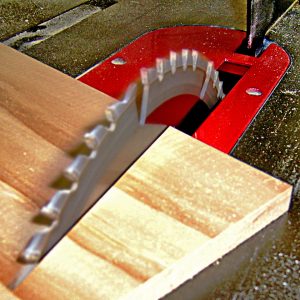Table of Contents
INTRODUCTION
Table saw blades are usually created using carbide or stainless steel. It is essential to sharpen your table saw blade mostly if it’s used frequently. If you’ve worked with your table saw blades continuously for a long time, it’ll start to dull and wear out which will become a problem because a dull blade cannot accomplish an excellent or neat job. The type of blade you own will determine the steps you’ll take to sharpen it. You may reach out to the manufacturer of your table saw blade for instructions on sharpening the blade. Sometimes when a blade gets dull, your first reaction may be to buy a new one, but it can be sharpened with an abrasive material instead. Blades are quite affordable, so it’s advisable to purchase more than one blade to switch to when one gets dull and while you sharpen the dull blade. For this, a diamond blade is the best option for sharpening other table saw blades. Also check out (how to sharpen circular saw blades by hand)
HOW TO KNOW WHEN YOUR TABLE SAW BLADE IS DULL
The following are some of the ways can be used to identify a dull table saw blade;
- The load on the motor increases
- The blade makes a sharp and shrill noise when it comes in contact with the surface of the material
- There is resistance when cutting through the material
- The ends of the cut material are rough and may have chips or splinters that can be seen at a close look
SAFETY MEASURES TO TAKE BEFORE AND DURING SHARPENING YOUR TABLE SAW BLADE
- Always have spare blades around to use when you sharpen other blades for a job
- Remove the blade from the saw carefully
- Make sure to clean the blade before you make use of it
- Follow the instructions for sharpening your blades from the manufacturer
- Ensure that you use protection and protective gear and gloves when you sharpen your blades
- Sharpen slowly but steadily
- You can use a s=blade sharpening service if you do not want to do it yourself
Just before you start to sharpen, you need a jig. A Jig will help to add a level of stability as you sharpen. It can lift your blade in place while you work on it on the tabletop. You can also use a sturdy material if you don’t have a jig although, It is highly recommended that you make use of a jig.
SHARPENING YOUR TABLE SAW BLADE
Firstly, take your circular blade and place it next to the diamond blade. Sharpen the inside of the blade teeth and briefly touch it up against the diamond blade. (which is where your carbide is if you use a carbide blade) This process will help to make it sharp and excellent for you to be able to work efficiently once more. Make sure to practice this a few times so you can get used to it.
Next, turn on the table saw and push the first tooth up against the diamond blade. Touch it gently and then pull it back and place the next tooth up the diamond blade. Continue this motion until all the blades on your table saw have been sharpened. Well, you’ve successfully maintained and sharpened your saw blades and also learn a great skill!
SHARPENING SERVICES
If you have trouble in sharpening your blades by yourself, you should consider a blade sharpening service. They will keep your blades sharp and nice. They’ll do the sharpening jobs, and you wouldn’t have to bother. They often possess professional blade sharpening machinery, and they do very professional work and can get your blades looking good as new.
It is a bit pricy though as it can cost up to 25-50 cents for each tooth. For example, a blade with 80 teeth can cost up to 20-40 dollars, and you made need to pay additional shipping costs if you don’t have a sharpening service around you. You can also check your local metal shop, and they may give you a fair bargain on sharpening your saw blades.
CONCLUSION
Sharpening your table saw blade could feel tasking, but it is a great skill and also helps to retain the lifespan of the blade. Although, you don’t want to sharpen your blades too often, but when averagely sharp, they can do a lot of good in making sure your project emerges neat.

